
Table of Contents
Parks in Dublin
Dublin is often called ‘The Big Smoke’ or ‘Dear Dirty Dublin’. But is it really just a big, dirty capital city? Definitely not!
Dublin is even home to the Phoenix Park, which claims to be the largest enclosed public park in a capital city in Europe.
In addition, there are many small green oases scattered throughout the city, which are great recreational areas to get away from the hustle and bustle of sightseeing.
After a busy day of checking out Dublin’s secret sites or some of the main attractions of Ireland’s capital, parks are the ideal spot to visit if you want to chill or check out one of the public events that are often staged in these locations.
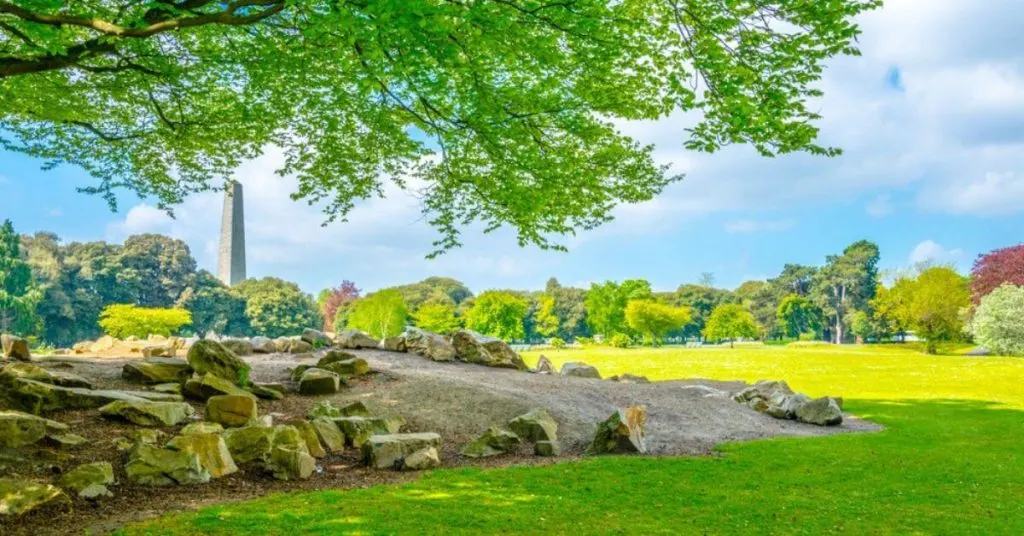
Dublin Parks Opening Hours
It is worth noting that the parks have clear opening times.
The official opening time of public parks is 10am, but closing time varies depending on the time of the year.
In December the parks close at 5pm, while in June and July you can enjoy the long summer evenings in the parks until 10pm at night.
For more information about the opening hours of specific parks in Dublin City, check the Dublin City Council website.
Looking for more information about visiting Dublin? Check out these posts:
- Dublin 3-day itinerary – Discover Dublin’s highlights
- Dublin’s best kept secrets – Ireland’s capital’s hidden gems
- Unusual Dublin – These sights are truly special to Dublin
Best Parks in Dublin
While some of the parks mentioned in this post are very popular and well known, others are real insider tips.
This post contains my personal favorites.
There are however several other parks in Dublin City and County Dublin worth checking out too including Bushy Park in Terenure for woody walks and Killiney Hill Park for superb coastal views.
Iveagh Gardens
First, my absolute favorite park and a real insider tip is right in Dublin City Centre.
Iveagh Gardens can be described as the little brother of the famous St. Stephens Green, which is only about 100 meters further north.
Not only is Iveagh Gardens more beautiful than its nearby neighbor, it has the added advantage of receiving considerably less visitors, probably because it is a little hard to find.
This secret garden is a true gem.
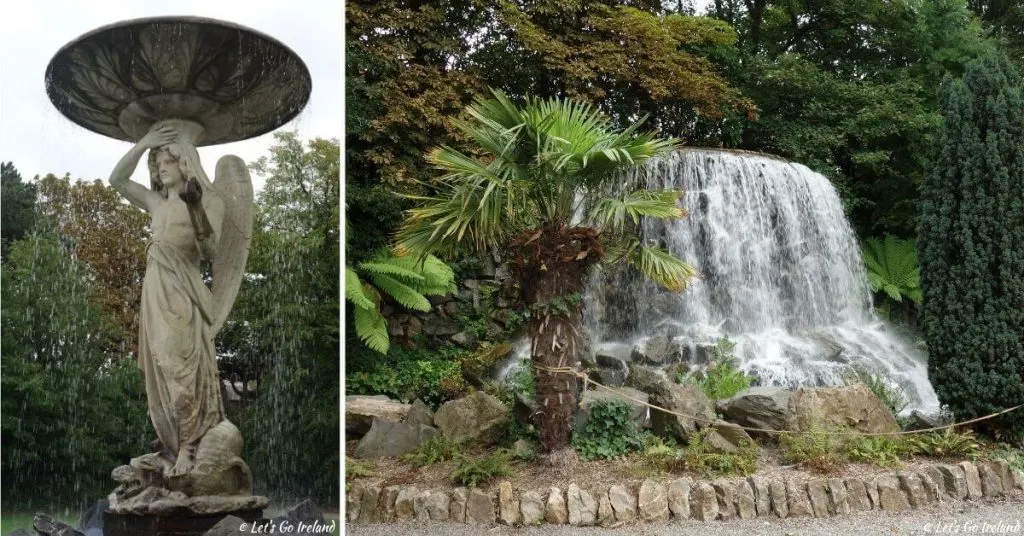
The garden is completely surrounded by a wall and many buildings are built directly on its border, which slightly obscures the entrances.
The most obvious access is via Clonmel Street.
There is also an entrance to the rear of the National Concert Hall on Earlsfort Terrace.
A slightly more conspicuous gate is on Hatch Street.
It might be a bit tricky to get in, but once you have, you will find this beautiful park a haven of tranquility in the middle of the center.
This park features a large waterfall that flows over a stone structure made up of stones from all 32 counties in Ireland.
To the north is the only dedicated archery facility in Ireland, which also houses the remains of an elephant buried there in 1922.
There are also really lovely fountains, a rose garden and a labyrinth to explore. Without a doubt this park is absolutely worth seeing!
St. Stephen’s Green
North of Iveagh Gardens, at the southern end of Grafton Street, is probably the most famous of all Dublin’s parks: St. Stephen’s Green (aka Stephen’s Green).
I would recommend everyone to stroll through this park at least once to get a feel for it, though I personally find it too overcrowded to relax and chill in (especially when the weather is good (or just dry!) around lunchtime).
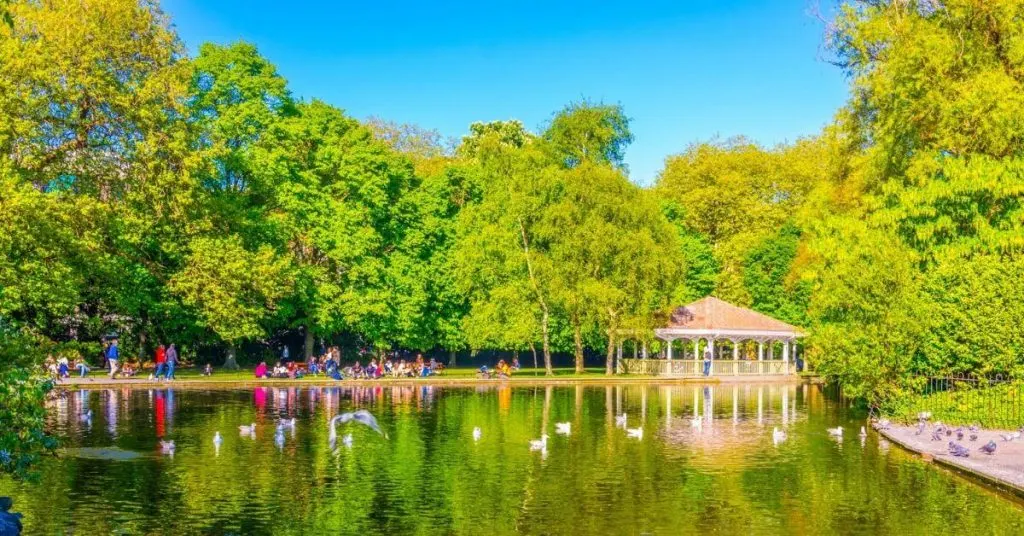
The high number of visitors doesn’t only refer to those who walk on two legs…..
There are also a large number of feathered friends such as seagulls, pigeons, ducks and other birds, which can be quite noisy and messy. Despite this criticism, the park is still worth a visit.
Stephen’s Green is intimately linked to Irish history due to its central location in Dublin city.
In the 18th century, it was the site of numerous executions, and in the 19th century, the Guinness family financed the redesign and opening of the park to the public.
During the Easter Rising of 1916, the rebels occupied the park and defended it (without success) against the British army.
Today you can see public art in the form of statues and busts of famous personalities (for example, James Joyce or W. B. Yeats), a triumphal arch from 1907, a plant garden for the visually impaired with descriptions of the aromatic plants in Braille and much more.
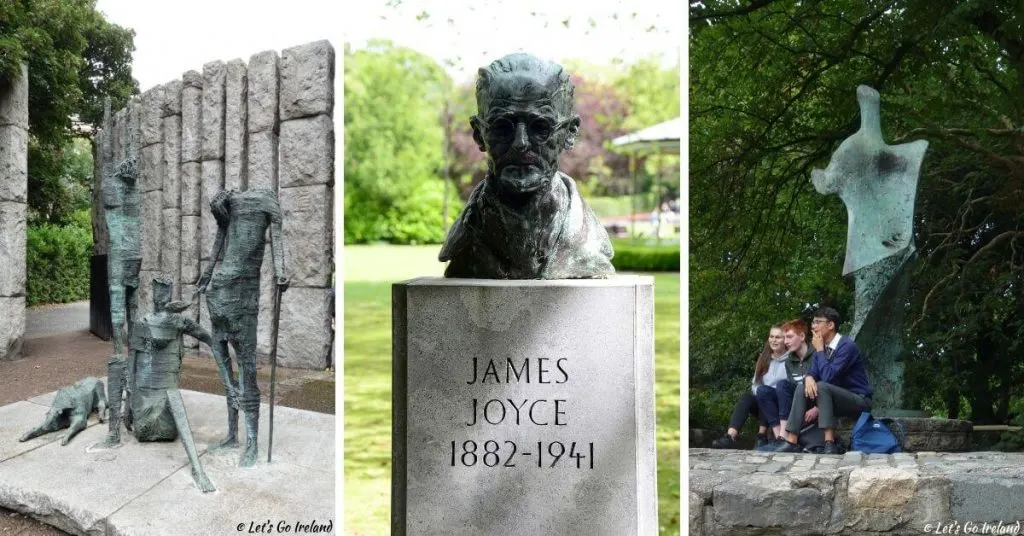
The Famine Memorial commemorates one of Ireland’s bleakest historical times (1850s),
a bust, according to Nils, of the greatest Irish writer ever, James Joyce (photo: CC BY-SA 4.0_Osama_S_M_Amin), and a statue of W. B. Yeats by Henry Moore (what? you can’t see Yeats in that statue that in all honesty looks a bit more like a rain cape than a man…)
It is interesting to note that in the 1950s, the Norns Fountain was a gift from the Cabinet of Germany to Ireland in memory of Operation Shamrock.
After the Second World War, the Irish Red Cross enabled more than 1000 orphans from Germany, Austria and France to stay for up to three years with Irish host families.
Some of them still live in Ireland today.
Blessington Street Basin
This is without doubt an insider tip!
This park can probably be described as the most beautiful, but least known park of all and can be found north of O’Connell Street.
The Blessington Street Basin was once a water reservoir and has also supplied the city’s great stills with water for whiskey production.
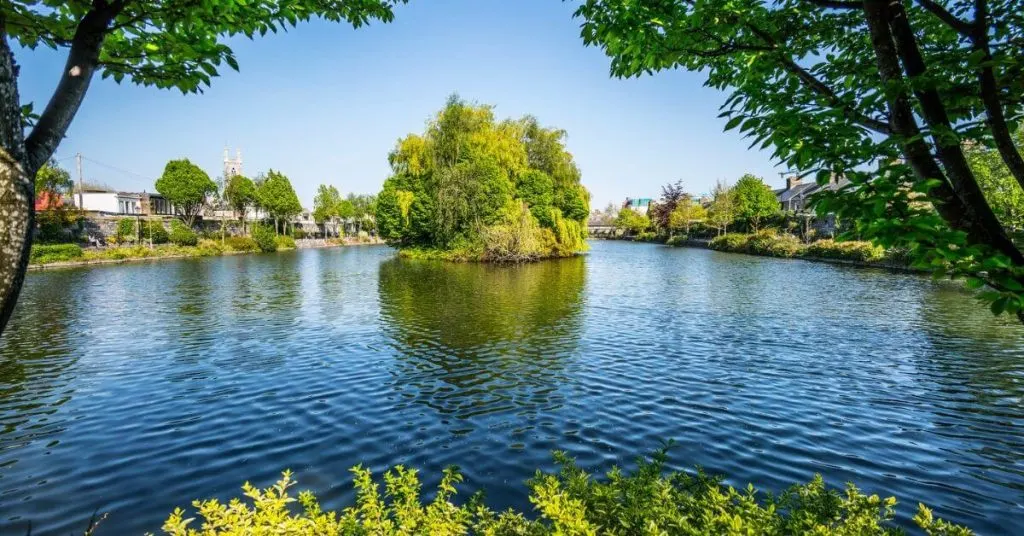
(Photo: CC BY-SA 2.0 William Murphy)
Today the park offers itself as the perfect oasis in the middle of the city. It almost feels like you are stepping into another world when you walk through the gates.
Maybe it’s because water is the predominant element in the park.
It doesn’t matter where you are in Blessington Street Basin, you look out over the large pond and the small green island on it.
On a beautiful day when the sky is reflected on the water, I think that there is nowhere better to relax in Dublin than this spot.
Merrion Square Park
Not far from Trinity College, surrounded by pompous Georgian-style Merrion Square, is Merrion Square Park.
This is one of Dublin’s best-kept parks, and is much quieter compared to Stephen’s Green. Oscar Wilde fans will definitely get their money’s worth here.
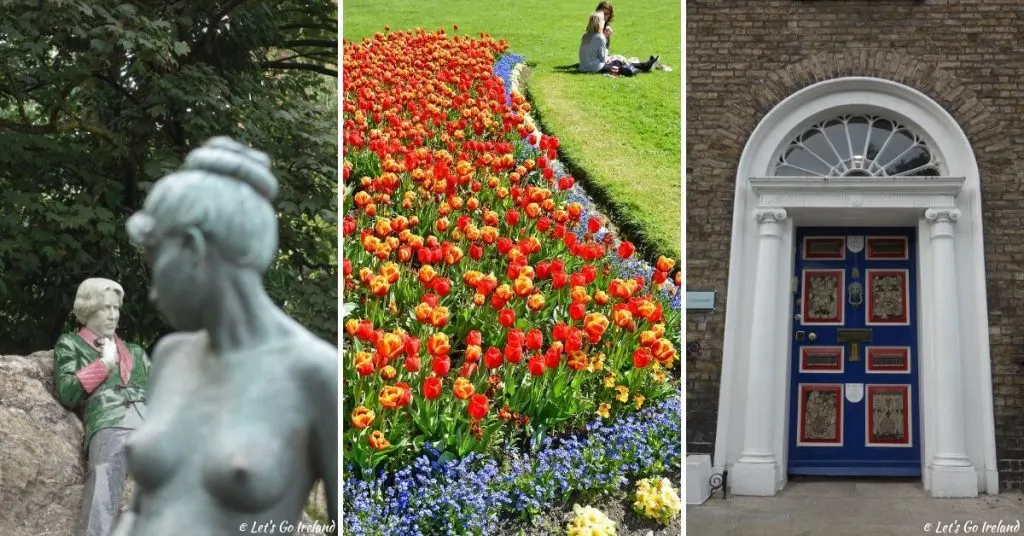
Oscar Wilde lasciviously hanging out on a rock while a nude representation of his pregnant wife looks at him,
a beautiful bed of flowers in spring (Photo: CC BY-SA 2.0 Ron Cogswell),
and one of the famed grand Georgian doors of Merrion Square
Wilde lived the first 20 years of his life in No. 1 Merrion Square (by the way, he was born around the corner, in 21 Westland Row).
Opposite the house in the park itself you will come face to face with an extravagant Oscar Wilde statue.
The park is also home to other strange art objects, sculptures and a collection of historic street lamps.
Another peculiarity lies under a small hill in the southeast of the park: a World War II air raid shelter.
In any case, Merrion Square Park is a nice place to go for a stroll.
While in the neighborhood, also check out Merrion Square itself as many famous people have lived here: W. B. Yeats for example in No. 82 and Daniel O’Connell (“The Liberator”) in No. 58. Even the British Embassy was based there until 1972 until it was burned down as a result of the Bloody Sunday riots.
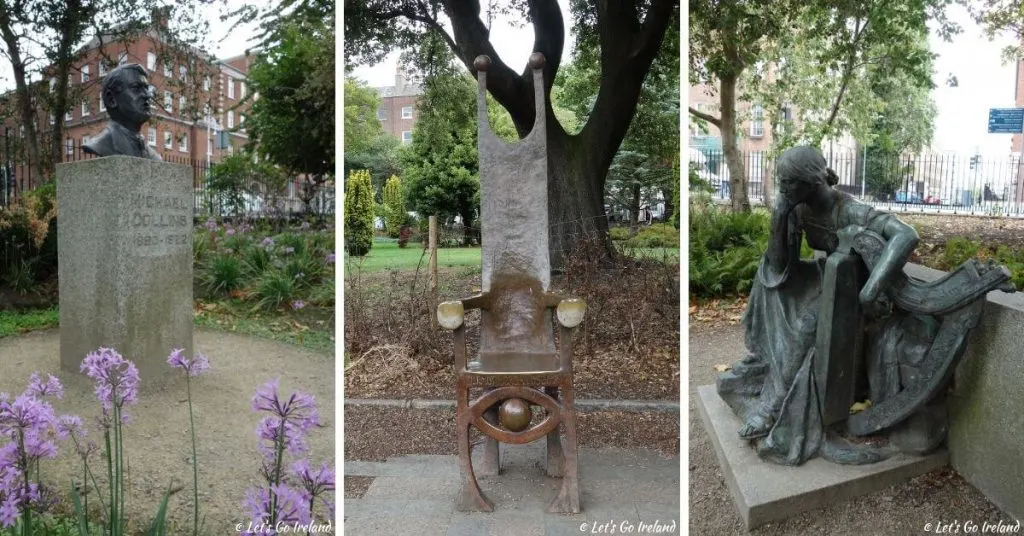
One more thing: The park has only been called Merrion Square Park since 2010. Previously, it was officially named Archbishop Ryan Park, named after the Archbishop of Dublin, Dermot Ryan.
The land belonged to the archdiocese (a cathedral was once to be built here) until Archbishop Ryan donated the park to the city of Dublin in 1974. Incidentally, you could only go to the park before if you had a key.
Phoenix Park

The largest park in Dublin aka “Dublin’s Green Lung” is in the north of the city.
Incidentally, in case you were wondering, the name derives not from the mythological phoenix from the ashes, but from the Irish word fionn uisce, which means “clear water”.
This is the place to go if you fancy wandering and exploring. It is so big and rambly that you can tend to get lost (it has happened to us a few times …).
If you fancy being active, then the Phoenix Park is ideal as there are great possibilities for jogging, cycling (at the entrance you can rent bicycles), inline skating (the asphalt here is in mostly in good condition) and orienteering.
In the section of the Phoenix Park known as the People’s Flower Gardens, you will have the chance to enjoy an immaculately manicured Victorian garden, complete with an ornamental lake.
The park is also a great place to watch wild fallow deer.
They can be found almost everywhere in the park, but in our experience, we have seen more animals in the north.
There are also designated picnic areas and barbeque spots throughout the park and a colorful playground for children.
Furthermore, the Phoenix Park also includes:
- The headquarters of the Gardaí (police)
- A huge papal cross that marks the place where Pope John II held a mass in 1979
- A magazine Fort which is more than 300 years old (and quite rundown)
- The imposing Farmleigh House, which until 1999 was owned by the Guinness family (sometimes tours of the house are available)
- The residence of the United States Ambassador to Ireland, and the official residence of the Irish President (Áras an Uachtaráin). On Saturdays, free guided tours of the president’s residence are offered to the public.
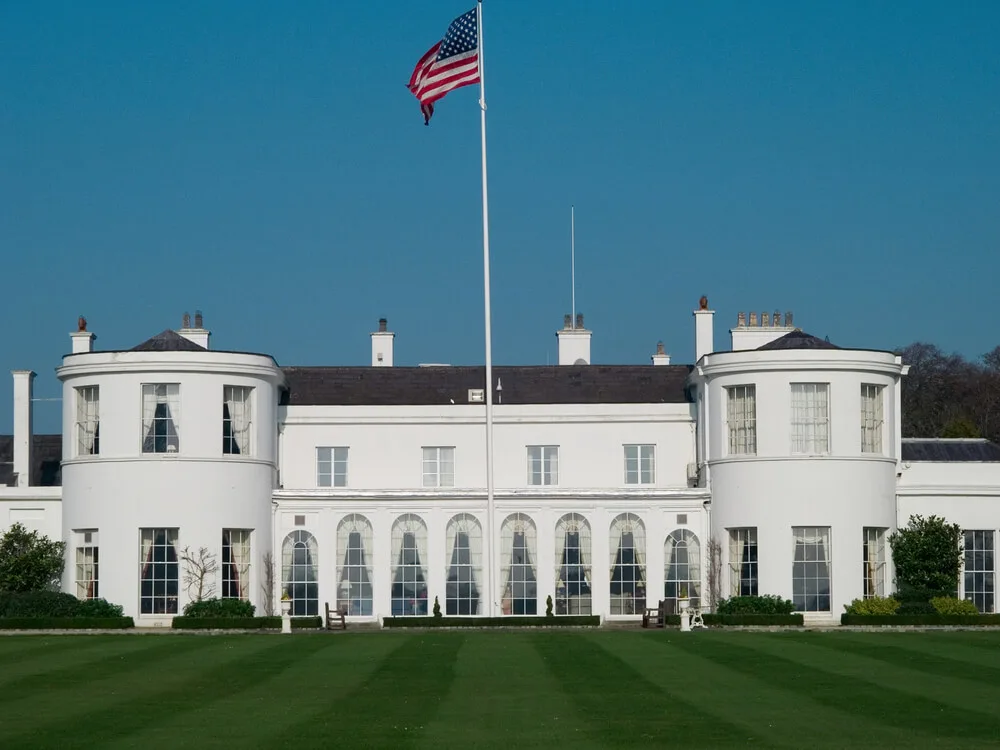
One more thing for the bucket list: The obelisk in the Phoenix Park is called the Wellington Monument (62m high) and is the biggest obelisk in Europe.
It is named after Dublin born Arthur Wellesley, the 1st Duke of Wellington, who beat Napoleon at Waterloo.
A tip for those of you who have a weak bladder: The only toilets in the park are next to the Visitor Center at ‘The Phoenix Café’ (north of the park) and the ‘Victorian Tea Kiosk’ (east near the zoo).
If the fallow deer are not enough for you, you can also go to the great Dublin Zoo and see many more animals. It is definitely worth it!
National Botanic Gardens
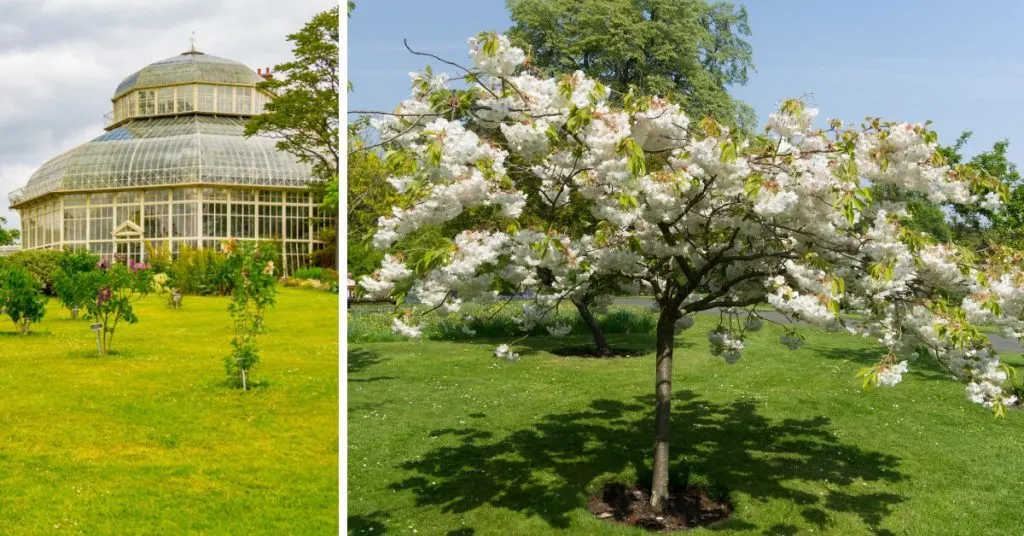
(right photo: CC BY-SA 2.0 William Murphy)
To really get away from the stress of a city trip, it’s worth taking a trip to the green oasis of the National Botanic Gardens.
Admission is free and very easy to reach from the city center in just 15 minutes by bus no. 9 and no. 83.
Here you can marvel at over 15,000 different plant species from all over the world.
But regardless of whether you are interested in plants or not, the Botanic Gardens offer a lovely landscaped environment to stroll around.
Our highlights are definitely the Victorian Glass Houses, especially the Great Palm House, which is home to Ireland’s only tropical rainforest.
There is also a magnificent rose garden, which is a treat for the senses in the summer, a rock garden, an arboretum and much more to admire.
Looking for more information about visiting Dublin? Check out these posts:
- Dublin 3-day itinerary – Discover Dublin’s highlights
- Dublin’s best kept secrets – Ireland’s capital’s hidden gems
- Unusual Dublin – These sights are truly special to Dublin
If you feel like it, you can also join one of the two guided tours offered daily to learn more about the over 200-year-old garden.
The tours are free on Sundays or cost about €5 on other days. Ideally you should plan about 2-3 hours for a visit.
On sunny days, the Botanic Gardens are a great place for a picnic.
The Garden Tea Room also offers food and refreshments and can be a good spot to heat up or cool down or dry off (!) depending on the season.
Furthermore, it is worth taking a look at the website of the Botanic Gardens, as exhibitions, scientific lectures and workshops are often offered for both kids and adults alike.
Bonus tip: If you feel like it, you can combine your visit with a walk through Ireland’s largest and most famous cemetery, Glasnevin, which is just around the corner.
There are some of the most important historical figures in Irish history interned here and you can admire the Celtic designs featuring on many tombstones.
Interested in some more hidden gems in Dublin? Read our post on Dublin’s secret sights!
Did you find this post useful? Save it for later on Pinterest!
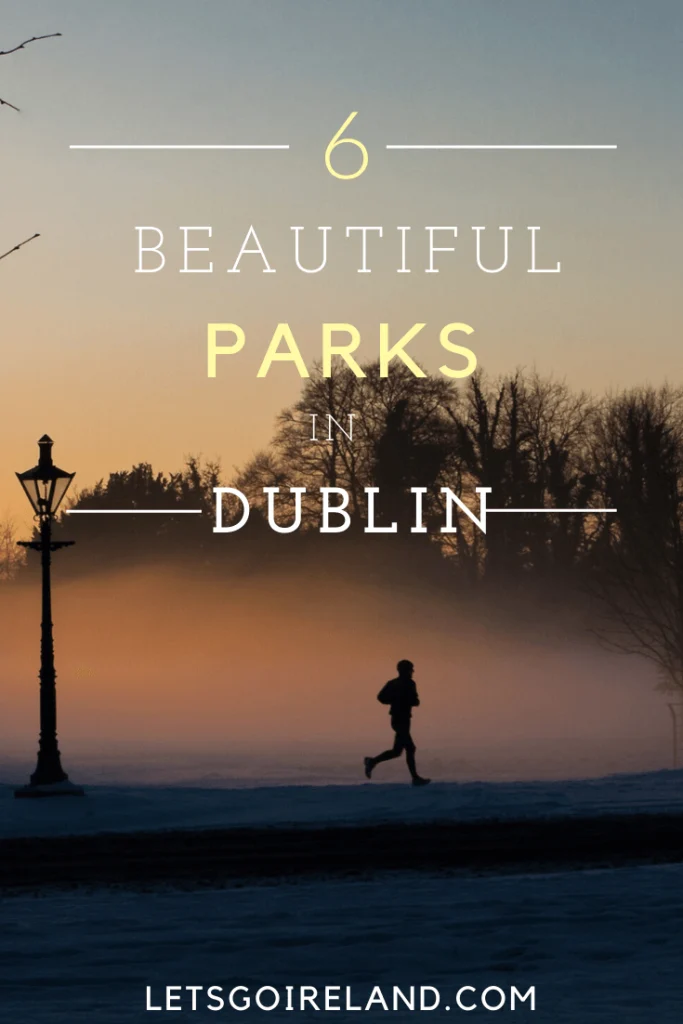

(Irish and Celtic Culture Aficionado, Literature Buff)
Nils Beese co-founded LetsGoIreland.com driven by his love for Ireland’s rich culture and captivating Celtic traditions. Holding a PhD in Irish literature, he’s spent time in Dublin and Cork, immersing himself in local tales and traditions. As a lecturer and guide, Nils seamlessly blends his German roots with his deep appreciation for Irish and Celtic culture. Through his writings, readers are invited into the vibrant and enchanting world of Irish stories and Celtic lore.
